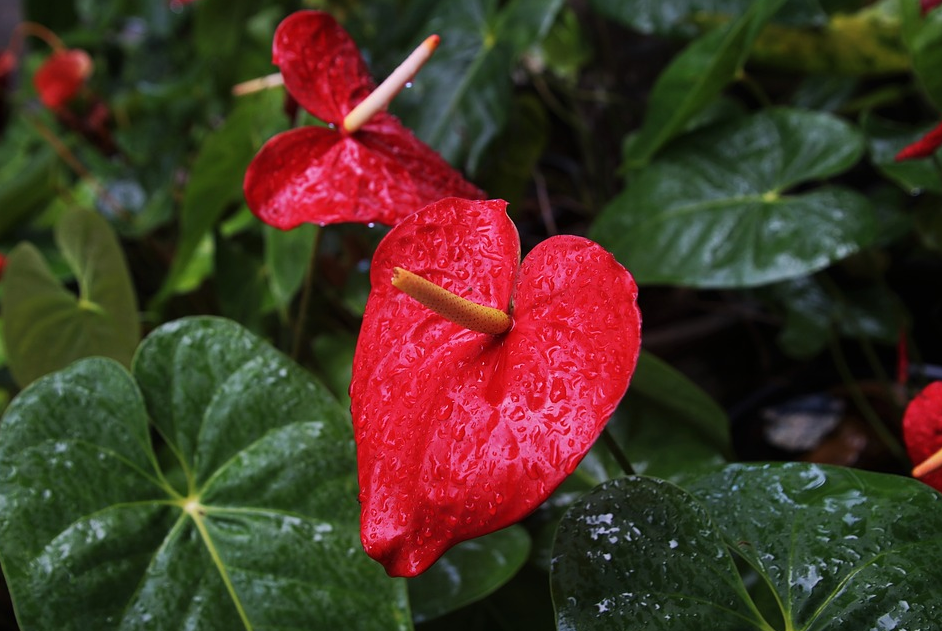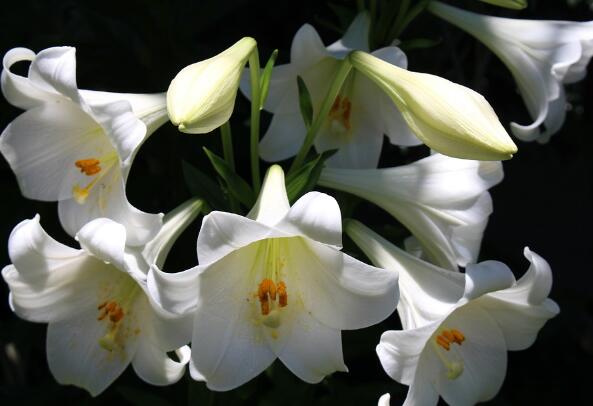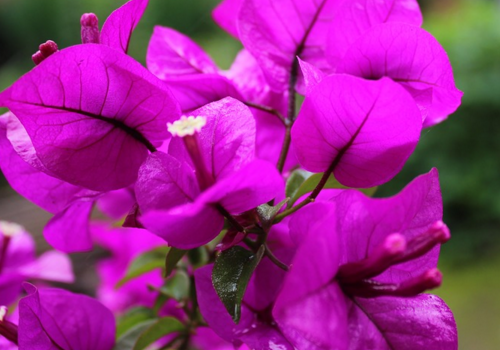Family Flower cultivation skills: cultivation methods of Anthurium andraeanum
Anthurium andraeanum, also known as candle, is a perennial evergreen herb of Araceae. Petiole slender, spawn flat, ovoid, leathery and waxy luster, orange or scarlet, can blossom continuously all the year round, with great ornamental value. The following is the family flower cultivation skills: Anthurium andraeanum culture method.

I. soil selection
When the family breeds, you can buy the prepared cultivation soil directly in the horticultural shop. When we get home, add a small amount of ceramsite or dried bark to the nutritious soil we bought. Ceramsite: dry bark = 2:1. However, the soil planted with Anthurium andraeanum should have good permeability and good drainage.
Be sure to disinfect the soil before planting, but if you prepare special soil, you can skip this step, so that Anthurium andraeanum is less likely to suffer from diseases and insect pests in the later stage of growth.
Second, temperature requirements
The most suitable growth temperature of Anthurium andraeanum is 14-35 ℃. When the winter temperature is lower than 10 ℃, Anthurium andraeanum is prone to frostbite and increase in time. When the summer temperature is higher than 35 ℃, sprinkle water around Anthurium andraeanum to cool down.
Third, how to fatten up
Anthurium likes fertilizer, the demand for magnesium fertilizer is higher, it is best to go to a professional florist to buy foliar fertilizer with high magnesium content. Or choose water-soluble compound fertilizer diluted into liquid fertilizer to fertilize Anthurium andraeanum. Spray once a week during the growth period. Adhere to the principle of "applying thin fertilizer frequently" when fertilizing, it is better to have less than more, but it will burn seedlings directly.
IV. Watering cycle
The watering of Anthurium andraeanum needs to be carried out according to the dryness of the basin soil. According to the rules summed up by flower friends, we have to do it every three days in spring and autumn. Once every two days in summer, and pay attention to it in summer, spray the leaves with a sprayer at noon to increase humidity. In winter, water can be watered once every 5-7 days.
When the weather is cold, it is watered between 9 a.m. and 16:00 Pay attention to the alternation of dry and wet during watering to avoid watering under the condition of serious water shortage and affect the growth and development of Anthurium andraeanum.
Pay attention to the control of humidity
High temperature and humidity is the favorite environment of Anthurium andraeanum. Humidity is related to temperature. If the room temperature is higher than 28 ℃, we need to increase the indoor humidity manually. Humidifier or sprinkler can be used to humidify. When the temperature is lower than 20 ℃, the indoor environment humidity can be maintained without watering.
In winter, even if the indoor temperature is high, it is best not to cool and moisturize too much. Excessive humidity of plant leaves at night will reduce its ability to protect against cold and make it frostbite, which is not conducive to winter.
VI. Prevention and control of diseases and insect pests
The most common pests of Anthurium andraeanum are red spider, nematode, cabbage worm, whitefly, thrips, snail and shell worm, especially red spider, nematode and cabbage worm. But Anthurium andraeanum is very sensitive to pesticides, if you can only use pesticides, it is best to choose a low concentration. It is particularly important to note that all pesticides containing copper, such as dimethoate, dichlorvos, malathion, parathion, methamidophos, etc., will be toxic to Anthurium andraeanum, and it is best not to use them.
7. How to trim
In order to avoid excessive consumption of Anthurium andraeanum, we should cut off the withered branches and residual branches in time during the growth of Anthurium andraeanum, while the cutting technique of Anthurium andraeanum has the theory of "three tunes and two cuts", that is, adjusting the direction, adjusting the plant, cutting the buds, cutting the buds, and cutting the presbyopia.
Time: 2019-04-05 Click:
- Prev

How to grow lilies? It's actually very simple! 5 big steps to teach you by hand ~
I believe everyone likes lilies very much. Many flower friends also like to raise lilies themselves, but they suffer from no way. In fact, it is very simple to raise lilies. Just remember these five steps.
- Next

Where is the main producing area of triangular plum? What are the breeding methods and matters needing attention?
Triangular plum is also known as triangular flower, leaf flower, bougainvillea, and scarf. Like high temperature and humid environment, like strong light. So, where is the main producing area of triangular plum? What are the breeding methods and matters needing attention of triangular plum? Where is the main producing area of triangular plum? Triangular plum is native to South America in the 1950s
Related
- Fuxing push coffee new agricultural production and marketing class: lack of small-scale processing plants
- Jujube rice field leisure farm deep ploughing Yilan for five years to create a space for organic food and play
- Nongyu Farm-A trial of organic papaya for brave women with advanced technology
- Four points for attention in the prevention and control of diseases and insect pests of edible fungi
- How to add nutrient solution to Edible Fungi
- Is there any good way to control edible fungus mites?
- Open Inoculation Technology of Edible Fungi
- Is there any clever way to use fertilizer for edible fungus in winter?
- What agents are used to kill the pathogens of edible fungi in the mushroom shed?
- Rapid drying of Edible Fungi

